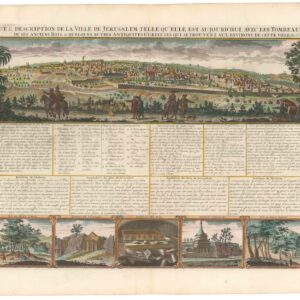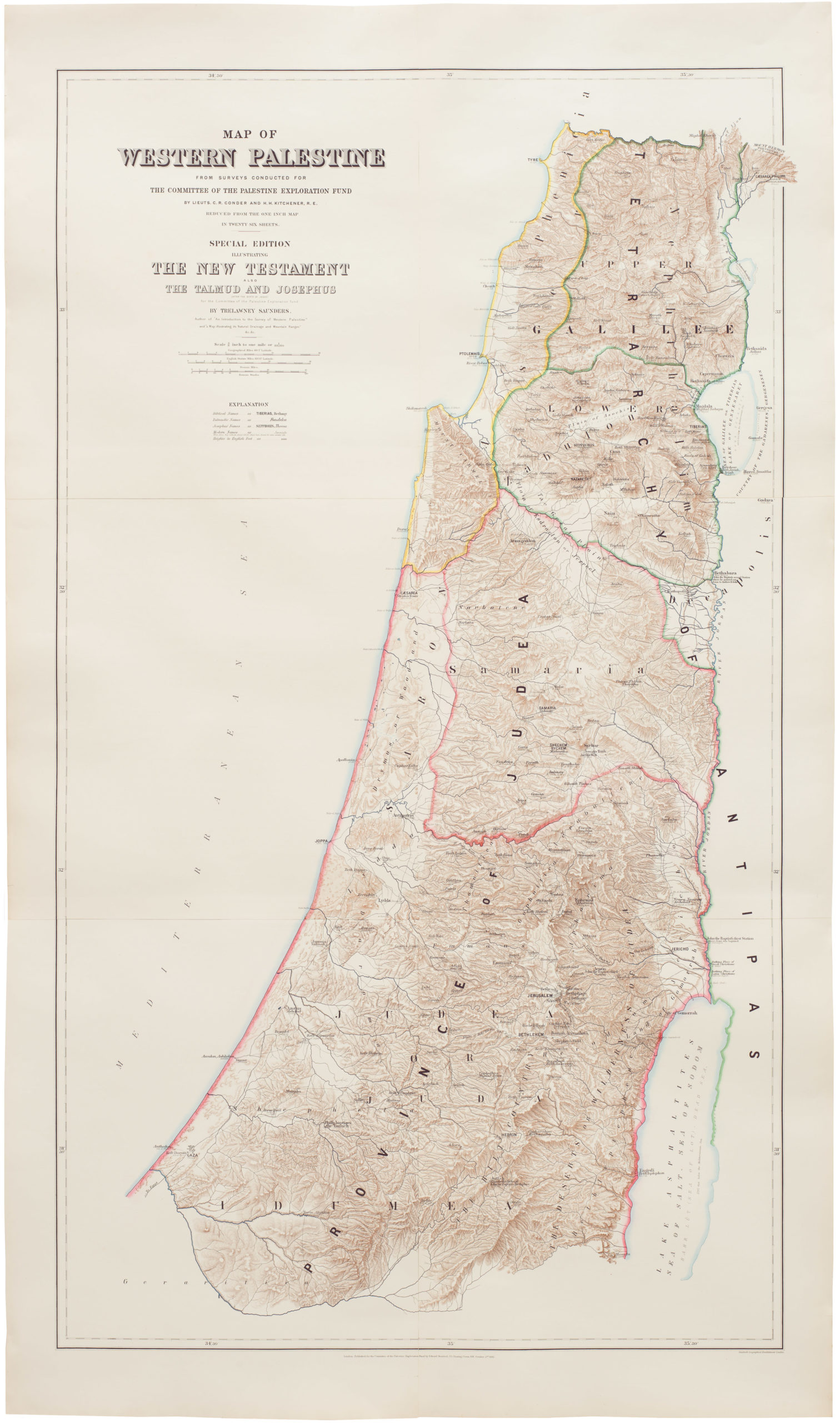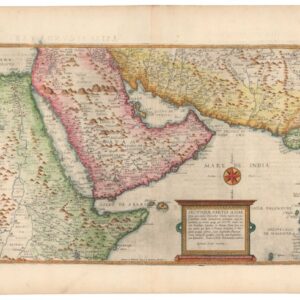Map of the Israelites’ Exodus from Egypt to Canaan.
Voyages des Enfans d’Israel Dans le Desert.
$575
1 in stock
Description
A richly detailed 17th-century French map illustrating the biblical Exodus of the Israelites from Egypt through the wilderness to the Promised Land, based on the account in the Book of Exodus. Published in Amsterdam by Pierre Mortier around 1725, this example is notable for its vivid hand coloring, ornate decorative features, and religious symbolism.
The map charts the Israelites’ path from Rameses in Egypt across the Sinai Peninsula, including stops such as Marah, Elim, Mount Sinai, and ultimately to the borders of Canaan. Topographic features are depicted pictorially, with stylized mountains, rivers, tents, and encampments. The Red Sea crossing is prominently illustrated with a dramatic parting of the waters, and the route is dotted with encampment numbers, corresponding to the biblical narrative.
A large and finely engraved title cartouche dominates the lower left, flanked by Moses, Aaron, and other biblical figures, while a scene of manna falling from heaven appears in the lower right—a visual reminder of divine intervention during the Israelites’ 40-year journey. The map merges cartographic precision with allegorical richness, serving both as a geographic reference and a theological reflection.
Originally published by Mortier as part of his ambitious “Suite de la Carte de Canaan”, this map reflects the blending of classical cartography with Baroque-era religious devotion. Mortier, a prominent Amsterdam-based publisher with French Huguenot roots, was known for republishing and refining French cartographic works for a broader European audience.
Significance
Maps of the Exodus were popular devotional and educational tools in early modern Europe, often used to illustrate the Old Testament’s historical geography. Mortier’s version is particularly prized for its size, artistry, and association with leading cartographic works of the period. Well-preserved examples, especially with original color and full margins, are increasingly scarce in today’s market.
Cartographer(s):
Covens & Mortier were a dynamic publishing duo working out of Amsterdam in the 18th century. Johannes Covens (1697-1774) was a Dutch geographic publisher based in the capital, whereas as Cornelis Mortier (1699-1783) was the Dutch-born son of a French cartographic publisher working out of Amsterdam.
Mortier’s father, Pierre Mortier the Elder (1661-1711) had in 1690 obtained the king’s privilege to distribute the works of French geographers in the Netherlands and subsequently settled in Amsterdam to build his business. Following his death, Cornelis took over his father’s business in 1719 and partnered up with his brother-in-law, Johannes Covens, a couple of years later. The pair soon began publishing maps and atlases under the name Covens & Mortier. Over the ensuing decades, the business passes from one generation to the next, effectively maintain the Covens & Mortier brand throughout the 18th century (but changing the name several times along the way).
As a result of Mortier Senior’s original privilege, the firm specialized in re-issuing iconic French geographers such as de l’Isles, Jaillot, and Sanson. But they did not limit themsleves to French products alone. In 1725, the duo reissued Frederik de Wit’s Atlas Maior from 1705, just as they issued their own pocket- and town atlases. They also purchased plates from other firms and mapmakers and modified them according to their commercial vision. Among the plates subsumed under the Covens & Mortier brand were those of Pieter van der Aa, which were acquired in 1730. This was also the heyday of the firm, when it supposedly owned the single largest collection of cartographic prints ever accumulated in the mapmaking city of Amsterdam.
Condition Description
Very good.
References




![[Arabian Peninsula] Tabula Sexta de Asia.](https://neatlinemaps.com/wp-content/uploads/2024/03/NL-02008-NEW_thumbnail-300x300.jpg)